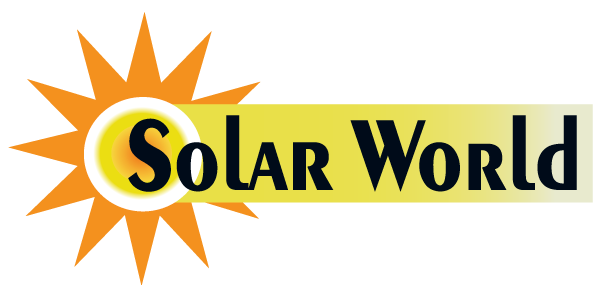Solar panel buying guide, How to buy a right Solar Panel
To buy the right Solar Panel, You might be looking at getting solar for a number of different reasons. But the most common reason is the massive amount of money that you can save on electricity over the next year and coming years.
The way Solar works is solar panels is installed on your roof, which is connected to an inverter or micro-inverters which then are connected to a switchboard and all your other circuits when the solar panels are producing power during the day this feeds back through your circuits in your switchboard powering everything you have on at this stage. If all the power from the solar does not get used it will feedback to the grid and you will receive a credit for this from your electricity supplier.
There are many different factors to consider when deciding on which solar system is right for you, to buy the right solar panel you should follow the four things:
- Panel Brands
- Inverter Brands
- System Size correctly suited to your consumption
- System cost
Some of the popular solar panel brands we have at Solar World Power to install on our customer’s roofs are Jinko, Canadian Solar, Trina Solar, Seraphim Solar, Risen Solar, Q Cell Solar, LG Solar, SunPower Solar, Longi Solar. These are al trusted brands which we would have no problem with recommending to our clients.
“Tier 1” Solar Panel:
Tier-1 is an industry ranking scheme. It’s used by the banks to decide if they are going to use a certain brand of solar panel in multi-million dollar solar farms. “Tier-1” does not mean it’s a high-quality panel directly. It’s based on the financial strength of the company. But it is in our opinion a proxy for quality because if the banks gonna spend millions on one brand of a solar panel for a solar farm, you can be fairly confident that they are gonna go with a good quality brand.
The Warranty is really important: To buy the right solar panels you should focus n the warranty factors. On a typical solar panel, the product warranty or the manufacturer’s warranty is about 10 years, whereas the performance warranty is about 25 years. Look for the longest manufacturer’s warranty you can, because that’s the easiest one to claim. Good solar panel brands are now going over 10 years, some are going for 12, some are going all the way to 25 years.
Solar Panel Specification: Solar panels will have dozens of specifications on their datasheets and you can really get your knickers in a twist comparing the specifications. Three major specifications that should be focused on are:
- Monocrystalline or multi-crystalline
- Efficiency
- Temperature coefficient
So, the quality of the solar should not be compromised at any cost. If you go for the better quality it will give you better service or performance and also last longer.
There is a quote in the case of Solar, “The bigger the better.” If there is space, if you have the budget then you should go for the maximum size that you are allowed to install on your roof. Because it will not affect your budget that much once the installers are on your roof and you are paying for their time. Since, most of the cost of solar panels will be covered by rebates, the rebate is paid per panel.
You should get a price quotation for solar. This is how the rebate will work. Mostly all the cost of the solar systems is carried by the federal solar rebate. If you decide to add more panels at last time while installers are installing panels on your roof already, the additional cost that you have to bear is the installer’s time, additional mounting tools, or maybe a bigger inverter. Thus you could get some extra kilowatt’s at a cheap price or cost, but the payback time will be incredible within a shorter time.
Consumption monitoring can give you many advantages while using a solar system. Though you will get a “solar monitoring” with your new solar system which will monitor your daily power generation by your solar system. But getting a consumption monitoring will let you know how much power you are consuming from solar. It will bring some additional costs for you. But it is absolutely worth it. It will help you to monitor your solar system’s performance. Consumption monitoring helps you to detect any problem with your solar so that you could solve it instantly. It will also help you to find out where you are using your electricity more which can give you the opportunity to stop your power waste.
How many Solar Panels should you buy?
When you ask “How to buy the right solar panel”? The question that followed the term is “how many solar panels should you buy?”
If you have a reasonable electricity consumption and feed-in tariff we recommend getting as many panels as are allowed by your local electricity network, as many as you can afford, as many as will fit on your roof.
Once you have decided to pull the trigger and go solar, you will be paying a solar company to roll their truck, get on your roof for the day, and start installing panels. AND the way the solar rebate works, it’s paid per panel and it covers most of the cost of each panel from the wholesaler. That means once the guys on your roof; it actually costs very little to add more panels. And the more panels you have, the more energy you will have to power your home, especially in the morning, late afternoon, in winter, and on overcast days. Look how much extra energy you will get to use in the peak, morning, and evening times.

And more extra energy you get in winter.
DNSP Size rules: DNSP (Distributed Network Service Provider) is the entity that owns and maintains your local electricity network. DNSP allows you to install according to your budget and your roof size. And you have to follow the DNSP rules while buying the right solar panels.
Your electricity supply will either be single-phase, where one live wire is from the grid to your home, two phases where two live wires from the grid, or three-phase where three live wires from the grid to your home. You are allowed to have a maximum of five kilowatts of inverter capacity per phase. But the installation rules allow for 33% more panels. than your rated inverter capacity. 33% more than 5Kw is 6.6kw.
In Sydney, a Single phase connection is allowed to have a solar system sized up to 6.5kw
And the three-phase connection is allowed to install a solar system sized up to 30kw.
Most businesses have a three-phase connection, but in terms of houses, a single-phase connection is common in Sydney. But there are many houses that have a three-phase connection. So a 10kw system is allowed for those houses. They could easily go for a 10kw solar system if their electricity demand is high.
It is important to ensure your electricity retailer is giving you the best price for your electricity you consume as well as the electricity your solar system exports back to the utility. It’s recommended you get a few comparison quotes for this.
To buy the right Solar panel isn’t a hard job. At Solar World Power, we can answer questions you might have about the cost of installing solar panels in Australia, and the process involved and any other queries you might have.

